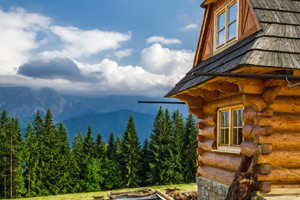Grand Teton National Park Nature & Outdoors, Wilderness Areas
Wildlife abounds in the mountains and valleys of Grand Teton National Park, Yellowstone Park and on the National Elk Refuge. Hike or camp in the Bridger Teton Forest, Targhee Forest, and Shoshone Forest. Experience the backcountry in the Bridger Wilderness, Fitzpatrick Wilderness, Jedediah Smith Wilderness and the Teton Wilderness. Enjoy the various hot springs and rivers. Explore it all on the Teton Crest Trail!
Questions & Answers
Yes. Grizzlies were once a rare sight in Grand Teton National Park, but their range has expanded over the years, largely thanks to the Endangered Species Act. In the Greater Yellowstone Ecosystem, which includes Grand Teton National Park, the grizzly population went from 136 bears in the mid-1970s to a fully recovered population of 728 in 2019. Scientists say this is likely the maximum population capacity for many parts of the ecosystem. However, superstar mama bear 399 continues to produce large litters of cubs every year and frequent highly touristed areas of Grand Teton National Park. Grizzlies were delisted from the Endangered Species Act in Fall 2018, but are still protected within national park boundaries.
Yes. Wolves were reintroduced to nearby Yellowstone in 1995, and by 1998 their plaintive howls began echoing over the sagebrush flats, forests, and river bottoms of Grand Teton National Park and the surrounding valley of Jackson Hole. As of 2018, there were eight known wolf packs in the Grand Teton National Park and Jackson Hole area.
The National Park Service recommends carrying bear spray as an effective, non-lethal bear deterrent that can reduce your chance of injury while in the Grand Teton wilderness. However, despite the active population of grizzlies and black bears in Grand Teton National Park dangerous human encounters are rare as most bears avoid people. If you carry bear spray, make sure it hasn't expired, that you've read how to use it, and that you keep it accessible so you're ready to use it in the event of a chance encounter that startles a bear or puts you between it and its young.
Bison, gray wolves, black bears, grizzly bears, moose, pronghorn, big horn sheep, elk, mule deer and white-tail deer are among favorite species for visitors to see. Grand Teton National Park is also home to bald eagles, osprey, great gray owls. The ecosystem is also habitated by many smaller mammals that are no less exciting to spot and play important roles in the Greater Yellowstone Ecosystem. Even the occasional wolverine sighting occurs in the park.
In the Spotlight
Other Nature Resources
There are several caves to explore in South Dakota's Black Hills.







